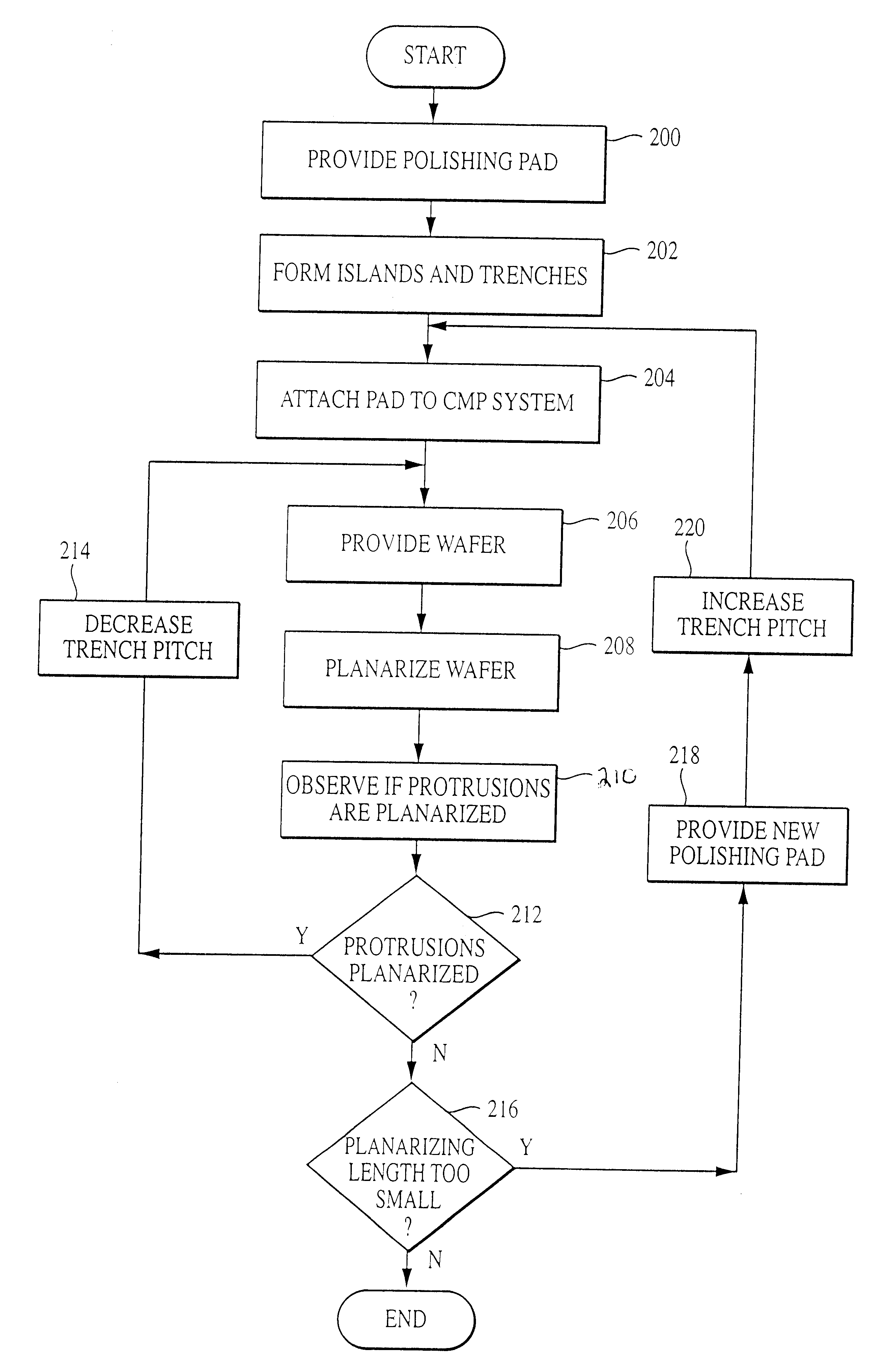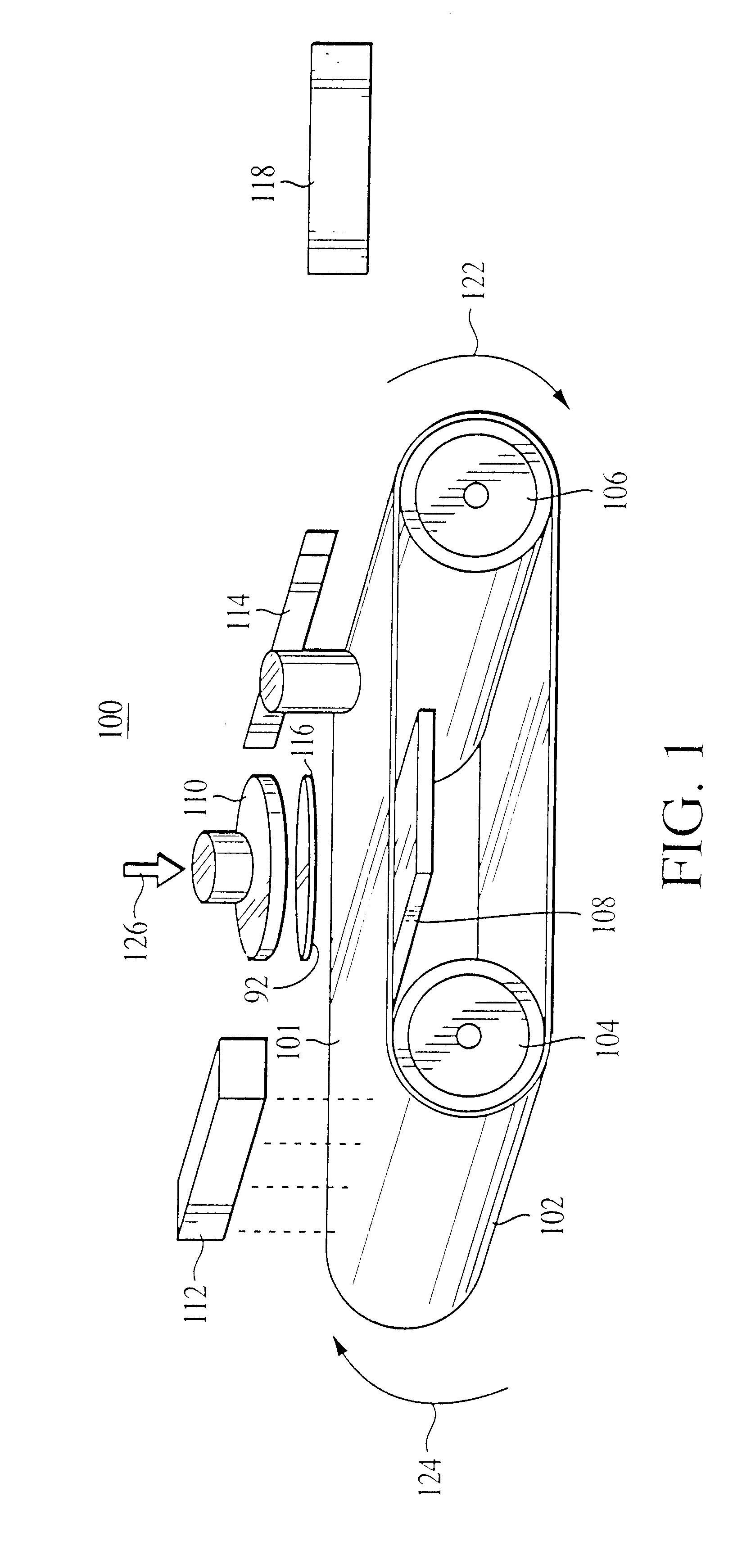Method for optimizing the planarizing length of a polishing pad
a polishing pad and planarizing technology, which is applied in the direction of lapping machines, manufacturing tools, abrasive surface conditioning devices, etc., can solve the problems of uneven surface on the wafer surface, uneven surface on the wafer, oxide layer pitting, etc., and achieve uniform decrease of the distance between the trenches on the first side of the polishing pad
- Summary
- Abstract
- Description
- Claims
- Application Information
AI Technical Summary
Problems solved by technology
Method used
Image
Examples
Embodiment Construction
By way of introduction, FIG. 1 illustrates a linear chemical mechanical polishing or planarization (CMP) system 100 for polishing a workpiece. The system 100 includes a polishing pad 102 having a polishing surface 101, a first roller 104, a second roller 106, a platen 108, a polishing head 110, a slurry dispenser 112, a conditioner 114, and a controller 118. The system 100 in the illustrated embodiment is adapted for the planarization of wafers such as the semiconductor wafer 116.
As shown in FIG. 5, the semiconductor wafer 116 includes uniformly spaced peaks 90 that protrude outwardly from the wafer 116, a film surface layer 92, and a bottom layer 93. The film surface layer 92 preferably is an oxide film that is deposited over the bottom layer 93. Film layer 92 has features 94 that are the result of conforming to the shape of bottom layer 93 when it is deposited over bottom layer 93. Although a preferred embodiment includes a semiconductor wafer having an oxide film, the operative p...
PUM
| Property | Measurement | Unit |
|---|---|---|
| thickness | aaaaa | aaaaa |
| thickness | aaaaa | aaaaa |
| thickness | aaaaa | aaaaa |
Abstract
Description
Claims
Application Information
 Login to View More
Login to View More - R&D
- Intellectual Property
- Life Sciences
- Materials
- Tech Scout
- Unparalleled Data Quality
- Higher Quality Content
- 60% Fewer Hallucinations
Browse by: Latest US Patents, China's latest patents, Technical Efficacy Thesaurus, Application Domain, Technology Topic, Popular Technical Reports.
© 2025 PatSnap. All rights reserved.Legal|Privacy policy|Modern Slavery Act Transparency Statement|Sitemap|About US| Contact US: help@patsnap.com



